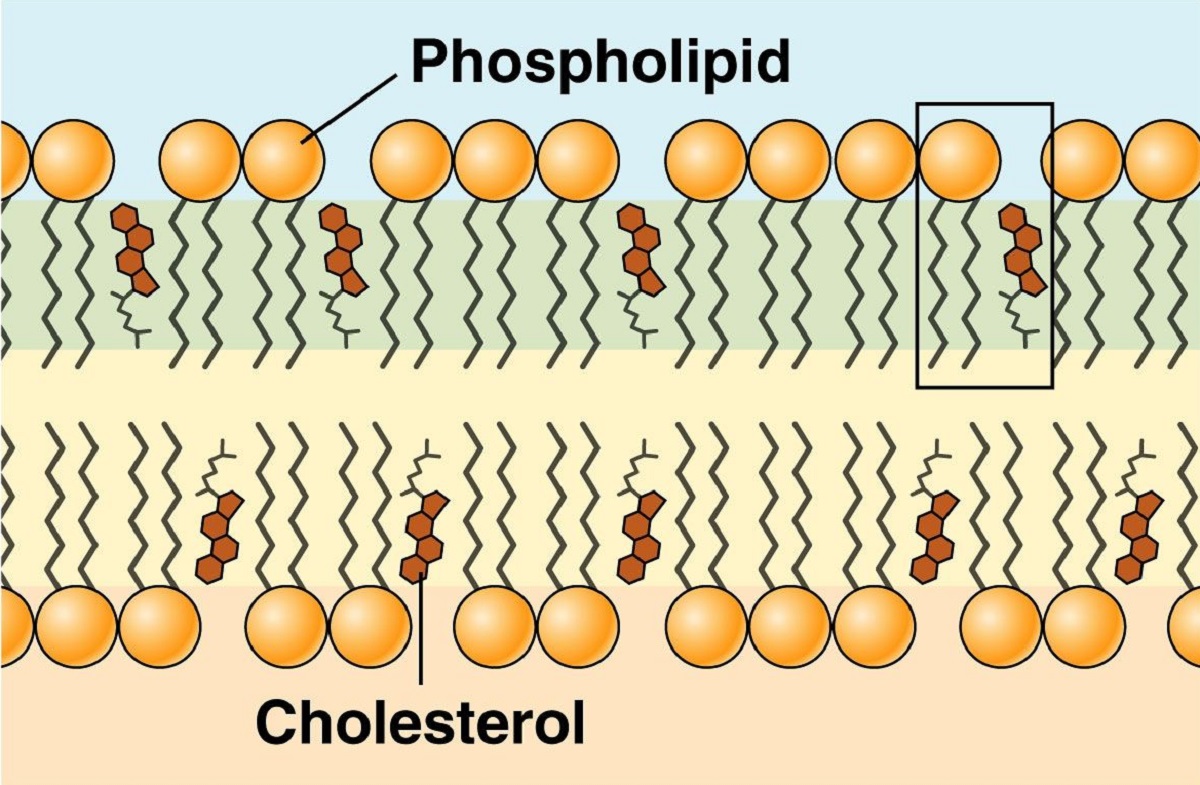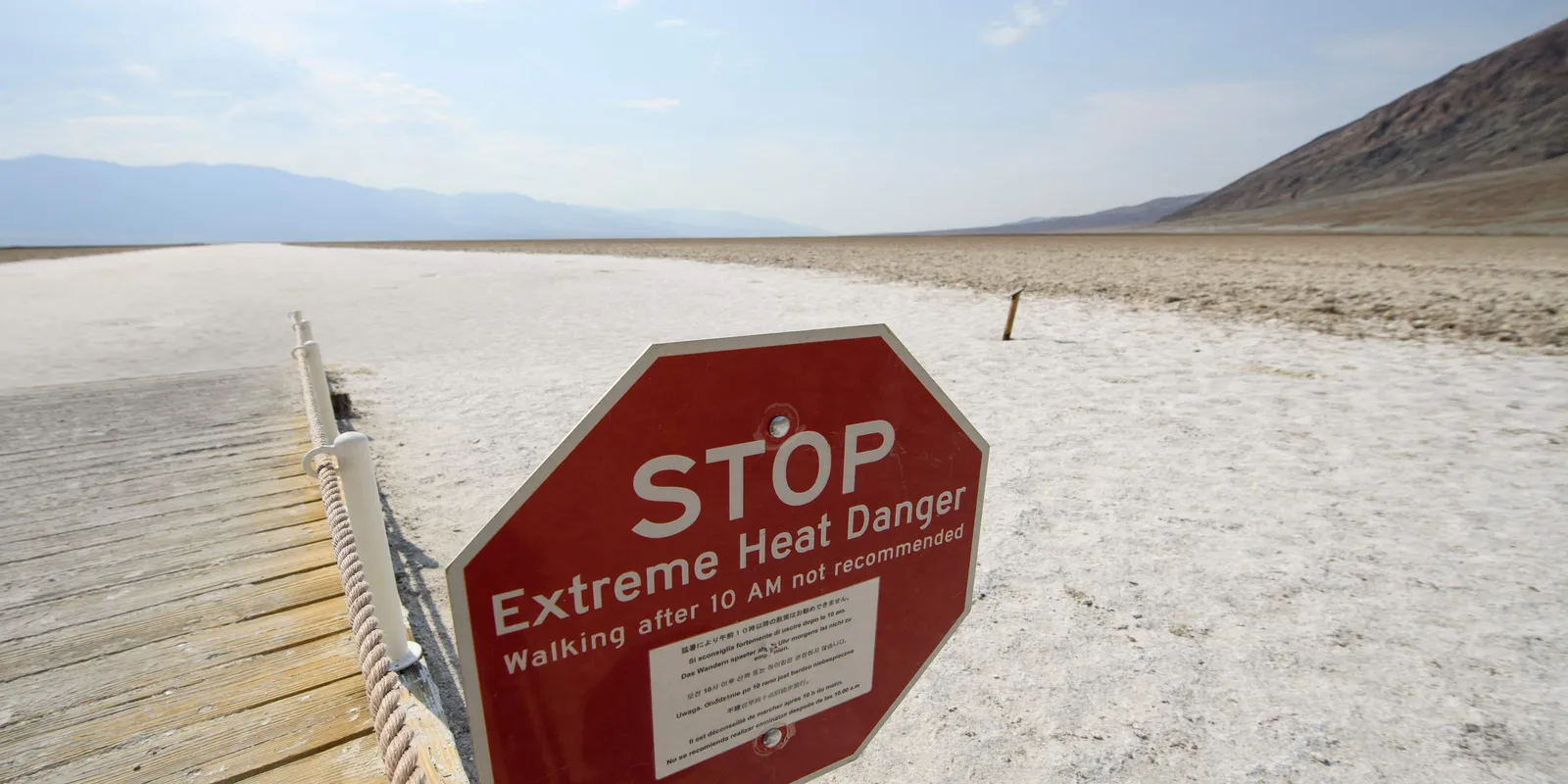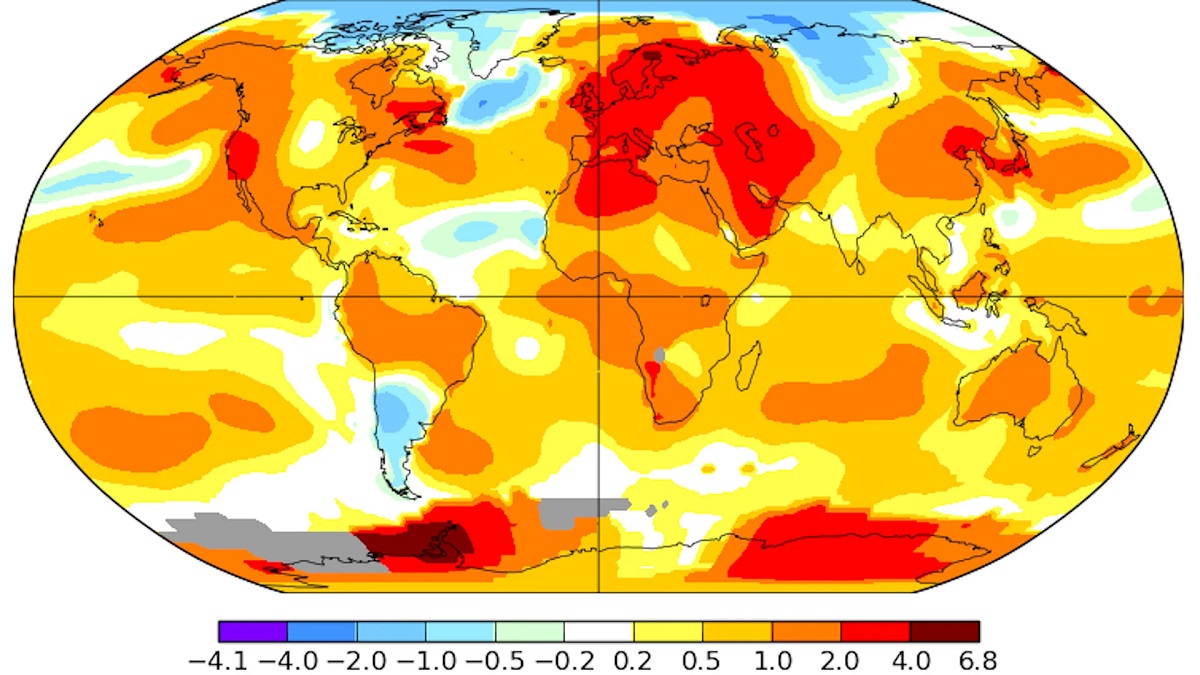Home>Education & Research>The Role Of Cholesterol In Maintaining Plasma Membrane Stability In Extreme Temperatures


Education & Research
The Role Of Cholesterol In Maintaining Plasma Membrane Stability In Extreme Temperatures
Published: February 19, 2024
Learn about the role of cholesterol in maintaining plasma membrane stability in extreme temperatures. Explore the latest education and research on this vital topic.
(Many of the links in this article redirect to a specific reviewed product. Your purchase of these products through affiliate links helps to generate commission for Temperatures.com, at no extra cost. Learn more)
Table of Contents
Introduction
The plasma membrane, also known as the cell membrane, serves as a crucial barrier that separates the interior of a cell from its external environment. This semipermeable membrane plays a pivotal role in maintaining cellular homeostasis by regulating the passage of substances in and out of the cell. The intricate structure and composition of the plasma membrane are essential for its functionality, especially in extreme temperatures where maintaining stability becomes a critical challenge.
In this article, we will delve into the fascinating world of plasma membrane dynamics, focusing on the role of cholesterol in ensuring membrane stability in extreme temperatures. By exploring the structure and function of the plasma membrane, as well as the specific contributions of cholesterol to membrane fluidity, we will gain a deeper understanding of how cells adapt to extreme temperature conditions.
Understanding the interplay between membrane structure, cholesterol content, and environmental temperature is essential for comprehending the remarkable adaptability of living organisms. This knowledge not only sheds light on the fundamental principles of cellular biology but also has practical implications in various fields, including medicine, biotechnology, and environmental science.
Join us on this enlightening journey as we unravel the intricate mechanisms that enable cells to thrive in extreme temperatures, and discover the indispensable role of cholesterol in maintaining plasma membrane stability.
Structure and Function of the Plasma Membrane
The plasma membrane is a remarkable structure that encapsulates the contents of a cell, serving as a dynamic interface between the cell and its external environment. Composed primarily of lipids, proteins, and carbohydrates, the plasma membrane exhibits a fluid mosaic model, where various components are arranged in a fluid, yet organized, manner.
Lipid Bilayer:
At the core of the plasma membrane lies a lipid bilayer, predominantly consisting of phospholipids. These phospholipids are amphipathic molecules, meaning they have both hydrophilic (water-attracting) and hydrophobic (water-repelling) regions. This unique property allows phospholipids to spontaneously form a bilayer in an aqueous environment, with the hydrophobic tails oriented inward and the hydrophilic heads facing outward, interacting with the surrounding water.
Integral and Peripheral Proteins:
Embedded within the lipid bilayer are integral proteins that traverse the membrane, often serving as transport channels, receptors, or enzymes. Additionally, peripheral proteins are found on the surface of the membrane, playing diverse roles such as cell signaling and structural support.
Carbohydrates and Glycoproteins:
Carbohydrates are attached to lipids (glycolipids) and proteins (glycoproteins) on the extracellular side of the plasma membrane. These glycoconjugates are involved in cell recognition, adhesion, and communication, contributing to the cell's interactions with its environment and neighboring cells.
Functions:
The plasma membrane serves as a selective barrier, regulating the passage of ions, nutrients, and waste products. It also plays a crucial role in cell signaling, allowing cells to communicate with each other and respond to external stimuli. Furthermore, the membrane's structural integrity is vital for maintaining cell shape and stability.
Fluidity and Flexibility:
The fluidity of the plasma membrane is essential for its functionality. This dynamic property enables the membrane to undergo shape changes, endocytosis, exocytosis, and lateral movement of its components, facilitating various cellular processes.
In essence, the structure and function of the plasma membrane are intricately intertwined, enabling cells to maintain internal homeostasis while engaging in interactions with the external environment. This delicate balance is essential for the survival and functionality of all living organisms, making the plasma membrane a cornerstone of cellular biology.
The Role of Cholesterol in Maintaining Membrane Fluidity
Cholesterol, often associated with negative connotations in popular discourse, plays a crucial and multifaceted role in maintaining the fluidity and stability of the plasma membrane. Despite its vilification in discussions about cardiovascular health, cholesterol is an indispensable component of cell membranes, where it contributes significantly to the structural integrity and functionality of these vital barriers.
In the context of membrane fluidity, cholesterol acts as a modulator, exerting influence over the packing and mobility of lipids within the lipid bilayer. This regulatory role is particularly pronounced in extreme temperature conditions, where maintaining an optimal level of fluidity is essential for cellular function. At higher temperatures, cholesterol serves to restrain the movement of phospholipid molecules, effectively reducing membrane fluidity. Conversely, in colder temperatures, cholesterol prevents the close packing of phospholipids, thereby enhancing membrane fluidity. This dynamic adaptability is crucial for cells to thrive in diverse environmental settings.
Moreover, cholesterol confers stability to the plasma membrane by preventing the excessive solidification or liquefaction of the lipid bilayer. By intercalating between phospholipid molecules, cholesterol modulates the membrane's physical properties, ensuring that it remains resilient and functional across a spectrum of temperatures. This stabilizing effect is particularly vital in extreme temperature environments, where maintaining membrane integrity is paramount for cellular survival.
Furthermore, cholesterol plays a pivotal role in organizing membrane microdomains, known as lipid rafts, which are enriched in specific lipids and proteins. These specialized regions serve as platforms for various cellular processes, including signal transduction and membrane trafficking. Cholesterol's presence within lipid rafts influences their structure and dynamics, contributing to the regulation of essential cellular functions.
In essence, the presence of cholesterol in the plasma membrane is not merely a passive consequence of dietary intake; rather, it is a finely orchestrated component that actively participates in maintaining membrane fluidity and stability. Its ability to adapt the membrane's physical properties to varying temperature conditions underscores the remarkable resilience and adaptability of cellular membranes, highlighting the intricate interplay between molecular components and environmental factors in cellular biology.
Adaptations of Plasma Membrane in Extreme Temperatures
In extreme temperature environments, living organisms face the formidable challenge of maintaining cellular functionality and integrity amidst drastic thermal fluctuations. The plasma membrane, being the primary interface between the cell and its surroundings, undergoes remarkable adaptations to ensure the survival of the cell in such demanding conditions.
At high temperatures, the plasma membrane undergoes structural modifications to mitigate the potential destabilizing effects of heat. Lipid bilayers tend to become more fluid in elevated temperatures, posing a risk of membrane disintegration. To counteract this, cells adjust the composition of their membranes by incorporating a higher proportion of saturated fatty acids, which enhances membrane rigidity and reduces susceptibility to thermal damage. Additionally, the upregulation of heat shock proteins, which aid in protein folding and stabilization, contributes to the maintenance of membrane integrity in extreme heat.
Conversely, in cold temperatures, the plasma membrane faces the challenge of preventing excessive solidification, which could impede the movement of essential molecules and compromise cellular function. To address this, cells increase the presence of unsaturated fatty acids in the lipid bilayer, promoting membrane fluidity and preventing crystallization. This adaptive response allows cells to maintain the necessary flexibility for membrane-bound processes, such as vesicular transport and signal transduction, even in frigid environments.
Furthermore, the redistribution of membrane components, such as proteins and lipids, occurs in response to extreme temperatures. This reorganization facilitates the formation of specialized membrane microdomains, such as lipid rafts, which serve as platforms for signaling molecules and membrane proteins. These microdomains play a crucial role in orchestrating cellular responses to temperature variations, enabling cells to modulate their physiological processes in accordance with environmental demands.
The adaptations of the plasma membrane in extreme temperatures exemplify the remarkable plasticity and resilience of cellular structures. These dynamic adjustments not only safeguard the integrity of the cell but also enable it to thrive in diverse thermal landscapes, underscoring the intricate interplay between environmental cues and cellular responses. The ability of the plasma membrane to adapt to extreme temperatures stands as a testament to the extraordinary adaptability of living organisms in the face of challenging environmental conditions.
Read more: The Role And Impact Of Greenhouse Gases
Cholesterol's Impact on Plasma Membrane Stability in Extreme Temperatures
In extreme temperature environments, the stability of the plasma membrane is of paramount importance for the survival and functionality of cells. The presence of cholesterol in the plasma membrane exerts a profound impact on its stability, particularly in the face of temperature extremes. Cholesterol's multifaceted role in modulating membrane fluidity and resilience enables cells to navigate the challenges posed by varying temperature conditions, thereby ensuring the integrity of the plasma membrane.
At elevated temperatures, the plasma membrane faces the risk of excessive fluidity, which can compromise its structural integrity and functionality. Cholesterol plays a crucial role in mitigating this risk by restraining the movement of phospholipid molecules within the lipid bilayer. This regulatory function reduces membrane fluidity, thereby preventing the potential disintegration of the membrane in response to heat. By exerting a stabilizing influence on the lipid bilayer, cholesterol contributes to the maintenance of membrane integrity in extreme heat, safeguarding the essential barrier function of the plasma membrane.
Conversely, in cold temperatures, the plasma membrane confronts the challenge of preventing excessive solidification, which could impede the movement of essential molecules and disrupt cellular processes. Cholesterol's presence within the lipid bilayer prevents the close packing of phospholipids, thereby enhancing membrane fluidity in response to cold temperatures. This adaptive mechanism ensures that the plasma membrane retains the necessary flexibility to support vital cellular functions, even in frigid environments. By modulating membrane fluidity in accordance with temperature variations, cholesterol enables cells to maintain the dynamic properties of the plasma membrane, essential for cellular resilience in extreme cold.
Furthermore, cholesterol's impact extends to the organization of membrane microdomains, such as lipid rafts, which play a pivotal role in cellular signaling and membrane dynamics. In extreme temperatures, the presence of cholesterol within these specialized membrane regions influences their structure and functionality, contributing to the regulation of essential cellular processes. This organizational role underscores the far-reaching impact of cholesterol on the stability and adaptability of the plasma membrane in response to temperature extremes.
In essence, cholesterol's impact on plasma membrane stability in extreme temperatures is a testament to its indispensable role in cellular resilience. By modulating membrane fluidity, preventing excessive solidification, and organizing membrane microdomains, cholesterol enables cells to maintain the structural integrity and functionality of the plasma membrane across a spectrum of temperature conditions. This intricate interplay between cholesterol and temperature dynamics underscores the remarkable adaptability of cellular membranes, highlighting the pivotal role of cholesterol in ensuring the stability of the plasma membrane in the face of environmental challenges.
Conclusion
In conclusion, the plasma membrane stands as a marvel of biological architecture, serving as a dynamic interface that not only delineates the boundaries of a cell but also orchestrates a myriad of essential cellular processes. The intricate interplay between its structural components, particularly the role of cholesterol, is pivotal in maintaining membrane stability and functionality, especially in extreme temperature environments.
Cholesterol, often maligned in popular discourse, emerges as a central protagonist in the saga of cellular resilience. Its ability to modulate membrane fluidity, prevent excessive solidification or liquefaction, and organize specialized membrane microdomains underscores its indispensable role in ensuring the stability of the plasma membrane across diverse thermal landscapes. The dynamic adaptability of cholesterol in response to temperature variations exemplifies the remarkable plasticity of cellular membranes, highlighting the intricate interplay between molecular components and environmental cues.
Furthermore, the adaptations of the plasma membrane in extreme temperatures showcase the extraordinary resilience of living organisms in the face of challenging environmental conditions. From the reorganization of membrane components to the adjustment of lipid composition, cells demonstrate a remarkable capacity to adapt and thrive in diverse thermal landscapes, underscoring the intricate interplay between environmental cues and cellular responses.
This deeper understanding of the role of cholesterol in maintaining plasma membrane stability in extreme temperatures not only enriches our knowledge of cellular biology but also holds practical implications in various fields. From biomedical research to biotechnological applications, the insights gleaned from this exploration pave the way for innovative approaches to enhancing cellular resilience and functionality in extreme environments.
As we unravel the mysteries of cellular membranes and their adaptations to extreme temperatures, we gain a profound appreciation for the intricate mechanisms that enable life to persist and thrive in the face of environmental challenges. The plasma membrane, with its dynamic interplay of components and its remarkable adaptability, stands as a testament to the resilience and ingenuity of living organisms, offering a glimpse into the awe-inspiring world of cellular biology and environmental adaptation.













